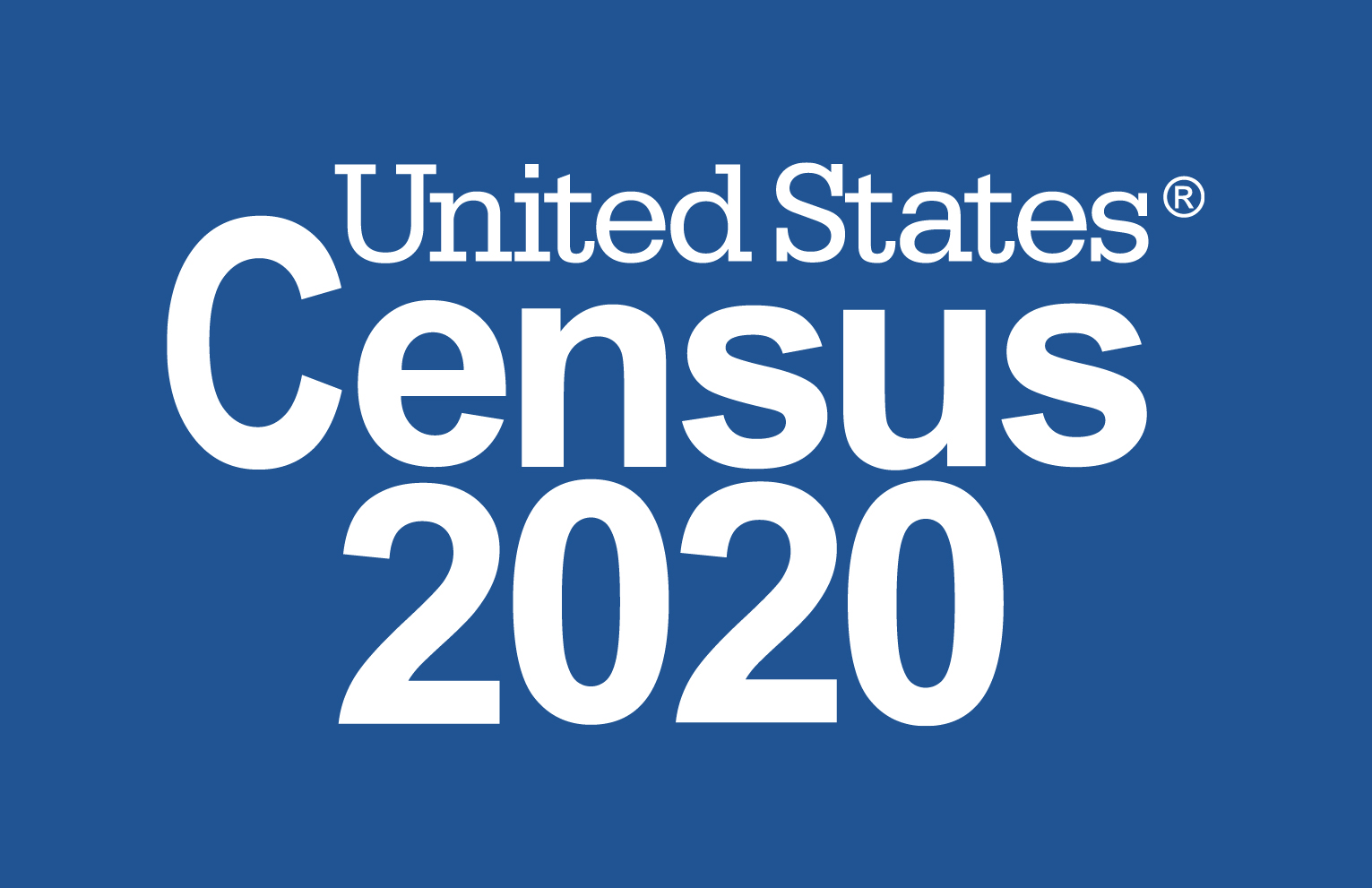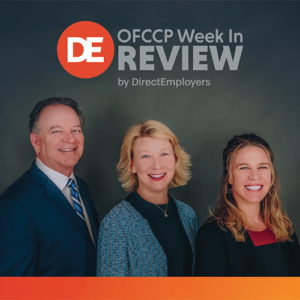Tuesday, January 21, 2020: OFCCP Honors Martin Luther King Jr.

- conduct more focused compliance reviews,
- prioritize larger systemic cases,
- provide meaningful compliance assistance,
- achieve speedier resolutions and corporate-wide conciliations.
Tuesday, January 21, 2020: U.S. Census Officially Started!

The U.S. Constitution mandates a census of the population every ten years. The Census Bureau’s goal is to count everyone who lives in the United States. Census statistics are used to determine the number of seats each state receives in the U.S. House of Representatives and will inform the allocation of billions of dollars in federal funds by state, local, and federal lawmakers annually for the next ten years.
“For the first time, we are inviting all people living in the United States to respond to the census online, which we know will appeal to a great deal of the public who regularly use the internet,” said Albert E. Fontenot Jr., associate director for Decennial Operations. “But the census questionnaire can also be completed by phone or by mail. We will offer guides and assistance in 59 languages, so everyone has a chance to respond.” Once you receive your information from the Census Bureau, you may respond on-line through the webpage.
A new capability of the updated U.S. Census Bureau’s Job-to-Job Explorer tool (also called J2J Explorer) is the ability to track moves within and across metro areas, compare earning changes for job switchers, rank results, and express flow volumes as a share of the local labor market.
Census Day
April 1st is Census Day. When completing the census, you will include everyone living in your home on April 1, 2020. Stay tuned for Census Day events across the country.
What about EEO Data?
What is the difference between the American Community Survey and the 2020 Decennial Census?
The Decennial Census, for the four decades between 1970 and 2000, contained occupation questions the Census Bureau reported out for affirmative action developers. These reports were known as the “EEO Special File” or the “Special EEO File.” The Clinton Administration changed that practice to reduce the enormous costs of administering the Decennial Census.
Fun Fact: The U.S. Census is usually thought to be the world’s largest civilian data file in existence. Hiring Census workers actually “moves” the unemployment needle in the U.S.!
In 2008, the Census Bureau released the first of its annual and every five-year American Community Survey (ACS). The ACS includes what the Census Bureau hoped would be an every five-year EEO Occupation Tabulation among the many reports published from the ACS. TheEEO Tabulations are the reports affirmative action planners use to calculate availability in Affirmative Action Plans for Minorities and Women., The ACS only samples a small portion of the U.S. population (160,0000), and therefore is far less costly to conduct than the Decennial Census. (The Census Bureau believes the ACS to be a proper representation of all 329 million people (currently) residing in the United States and also of the over 160 million people who (currently) work within the U.S. Many affirmative action planners question the accuracy of the ACS estimates, especially as to jobs with small headcounts.
Important Note
Conducted annually, the ACS releases new data in one and five-year increments. The most recent release was December 19, 2019, for the period 2014-2018. However, the December 19, 2019, ACS release did NOT include an updated EEO Tabulation for affirmative action planners. The Census Bureau informed DirectEmployers that it hopes to publish an updated EEO Tabulation in 2020. Nonetheless, we have other information suggesting a 2022 release is more likely. In the meantime, Government Contractors may continue to gather availability data for affirmative action planning purposes from the 2006-2010 EEO tabulation, which the Census Bureau first released in 2012.
See “Why We Ask Each Question,” for more details surrounding the employment questions that gather data to support affirmative action efforts.
According to the 2014 – 2018 ACS 5-Year Narrative Profile (reporting data collected between 01/01/2014 and 12/31/2018):
- There were 119.7 million households in the United States
- The average household size was 2.63 people
- The United States had a total population of 322.9 million:
- 163.9 million (50.8%) females and 159.0 million (49.2%) males.
- The median age was 37.9 years:
- 22.8% of the population was under 18 years
- 36.0% was 18 to 44 years
- 26.0% was 45 to 64 years
- 15.2% was 65 years and older
- 12.6% reported a disability
- 88.8% of households had a computer, and 80.4% had a broadband internet subscription.
Curious about your state’s statistics? Filter and search!
Friday, January 17, 2019: Retaliation Charges Top the Chart – Again!

Tip: OFCCP calls them “Complaints,” EEOC calls them “Charges.”
- Retaliation: 39,110 (53.8% of all Charges filed with the EEOC)
- Disability: 24,238 (33.4%)
- Race: 23,976 (33.0%)
- Sex: 23,532 (32.4%)
- Age: 15,573 (21.4%)
- National Origin: 7,009 (9.6%)
- Color: 3,415 (4.7%)
- Religion: 2,725 (3.7%)
- Equal Pay Act: 1,117 (1.5%)
- Genetic Information: 209 (0.3%)
These percentages add up to more than 100% because some charges allege multiple bases.
Flashback
See our Week In Review 2018 recap and EEOC statistics dating back to 2009 on the Enforcement and Litigation Statistics webpage.
Friday, January 17, 2019: OSH Act Turns 50

Historical Note
In 1977, John Fox co-authored the first book on OSHA rules, enforcement, and case decisions in the U.S. He remembers being aghast at the large number of fatality citations OSHA issued in its early days due to cave-ins burying construction workers alive in trench excavations without any support for towering walls of often wet or soft dirt. Also, the large number of amputations of fingers and limbs quickly shrank in the late 1970s as employers began to install machine guards– which we all now take for granted, but were largely non-existent on the manufacturing floors until the late 1970s. John also remembers participating in the 1977 OSHA rulemaking on benzene (a major ingredient in gasoline and diesel fuel/jet fuels) and shaking his head in disbelief as he reviewed the scientific occupational health studies. They convincingly showed that human skin readily absorbed gasoline/diesel fuel, and the human bloodstream then transmitted leukemia causing benzene to the heart typically within 12 seconds of a human being sticking his hands in gasoline or diesel fuel. John thought about the common practice in machine shops of the day and in the back yards of every household in America with a gasoline-powered lawn-mower (before electric lawnmowers became popular) in which manufacturing and yard workers would routinely bathe their grimy hands in gasoline to clean them spotless of oil and grime in seconds—as he himself had done on most Saturdays as a teenager mowing lawns at home and for neighbors. Every gas station in those days also had working repair bays and every garage used open gasoline vats to soak oil-grimy tools clean.
The scientific studies about vapor inhalation were as scary as the absorption studies. John thought back to all the stories he had heard from Vietnam veterans about running out of potable water and routinely using diesel fuel–not only to wash their hair, but also to bathe. Diesel fuel used for Bell HU-I (Huey) helicopters and trucks was everywhere in South Vietnam, even if fresh water was not immediately always at hand in the Vietnamese jungles. Well, it turns out that some regulation in the interest of the common safety and health is beneficial. We have come a l-o-o-o-n-g way, Baby, despite the early corporate derision of OSHA! If you have not seen this widely circulated, early corporate anti-OSHA poster depicting A Cowboy after OSHA, it is worth a look and a laugh!
Reminder
Employers covered by the Occupational Safety and Health Administration’s recordkeeping rule must post a summary of 2019 work-related injuries and illnesses in a noticeable place from February 1st to April 30th. For a summary of employer responsibilities under the OSH Act, see the overview webpage.
Reminders!
- Apprenticeship & Digital Accessibility Webinar: The Office of Disability Employment Policy (ODEP) and a member of the technical assistance team from ODEP’s Apprenticeship Inclusion Models (AIM) Initiative will present a webinar on January 29th from 4:00-5:00 p.m. Eastern Time. The topic will be “Inclusion and the Future of Work” and will discuss the inclusion of people with disabilities in the workplace with a focus on the benefits of apprenticeships and digital accessibility. This is part of the American Association on Intellectual and Developmental Disabilities monthly webinar series.
- Tax Year 2019 wage reports must be filed with the Social Security Administration by January 31, 2020.
- W-2 Forms must be “furnished” either electronically or postmarked by January 31, 2020.
THIS COLUMN IS MEANT TO ASSIST IN A GENERAL UNDERSTANDING OF THE CURRENT LAW AND PRACTICE RELATING TO OFCCP. IT IS NOT TO BE REGARDED AS LEGAL ADVICE. COMPANIES OR INDIVIDUALS WITH PARTICULAR QUESTIONS SHOULD SEEK ADVICE OF COUNSEL.
SUBSCRIBE.
Compliance Alerts
Compliance Tips
Week In Review (WIR)
Subscribe to receive alerts, news and updates on all things related to OFCCP compliance as it applies to federal contractors.
OFCCP Compliance Text Alerts
Get OFCCP compliance alerts on your cell phone. Text the word compliance to 55678 and confirm your subscription. Provider message and data rates may apply.

